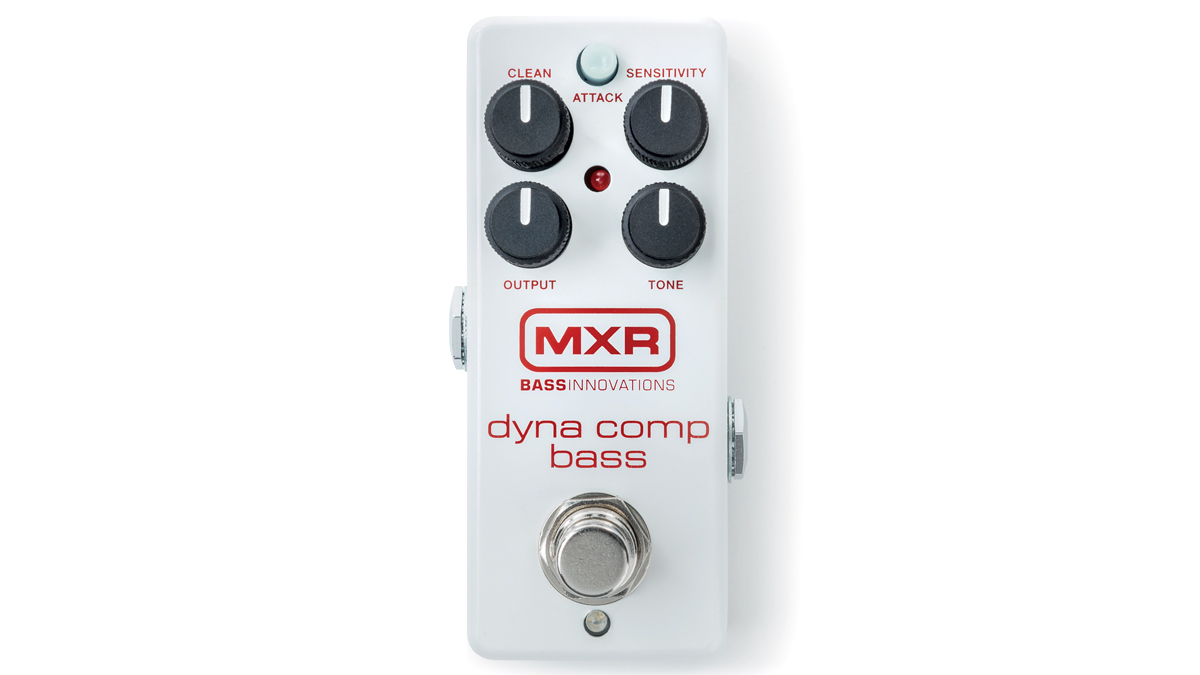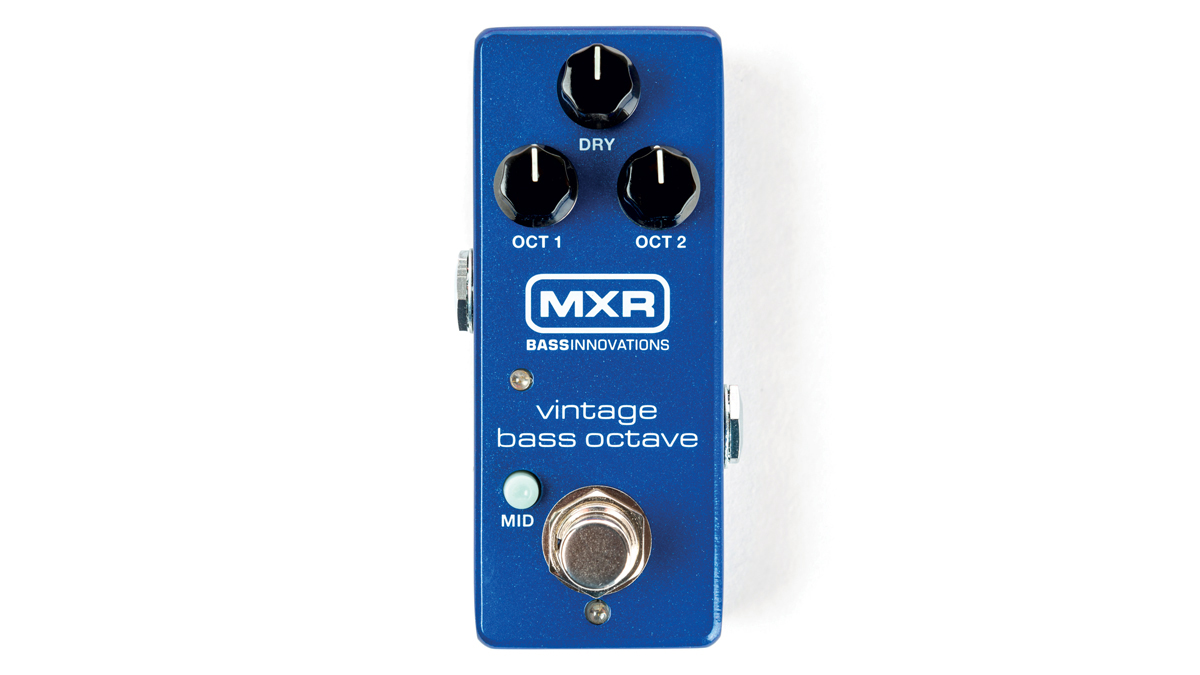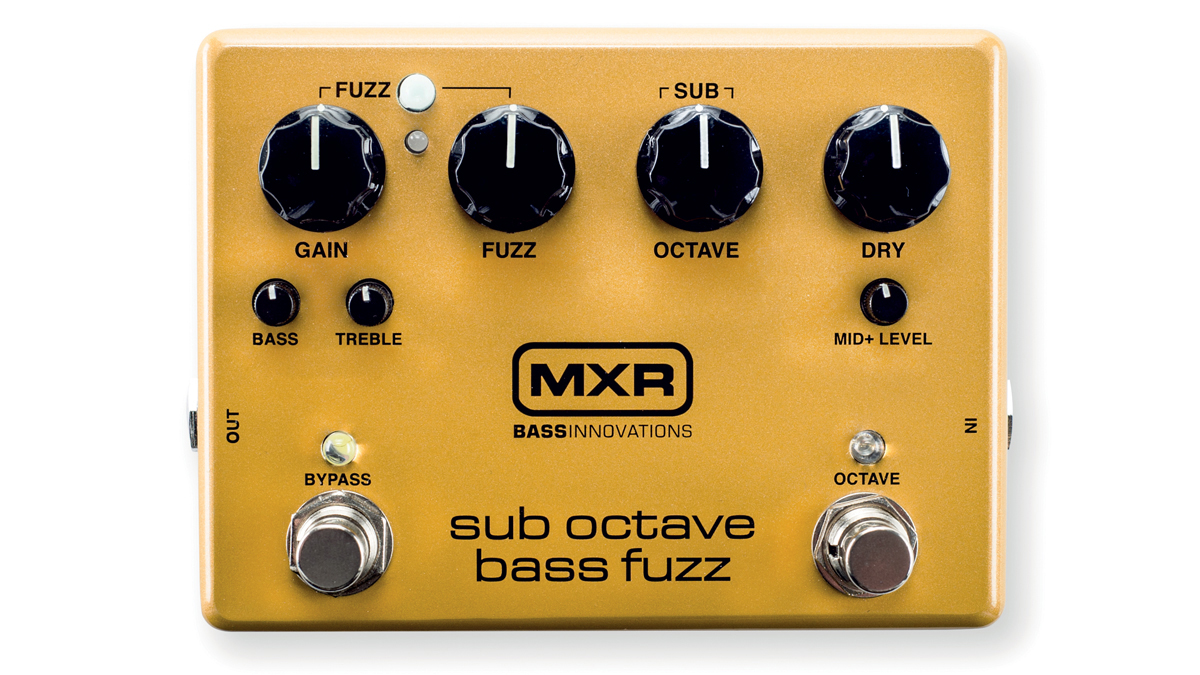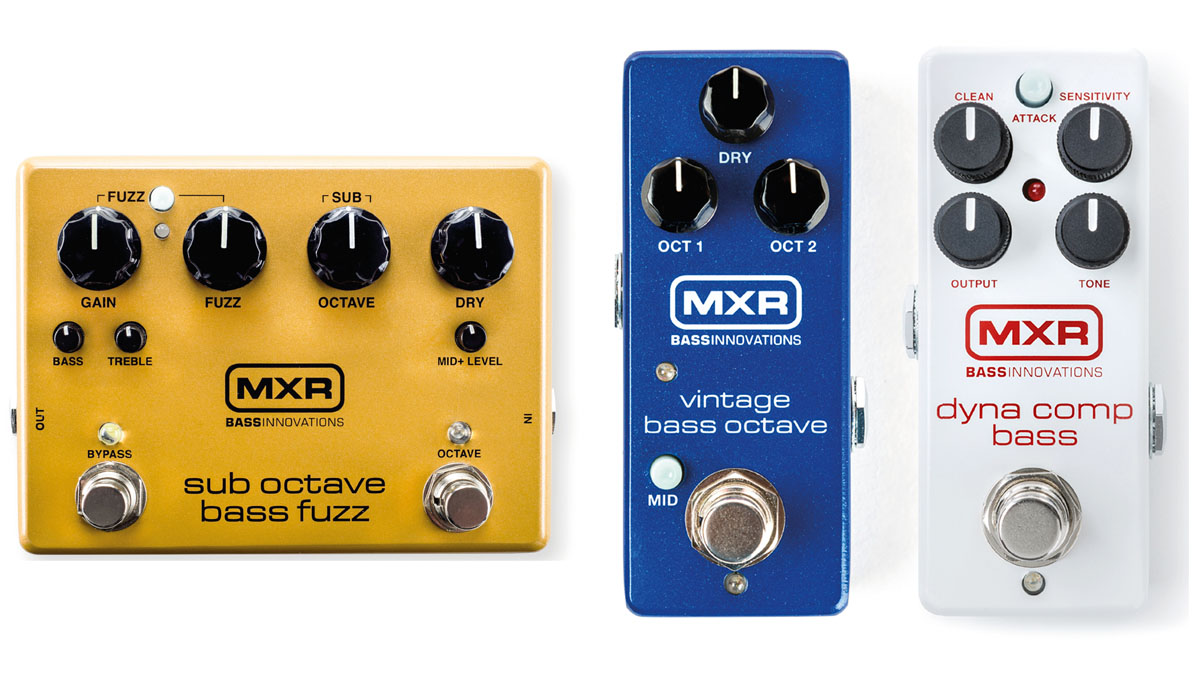Guitar World Verdict
MXR pedals continue to impress and remain a rock-solid option. Bassists looking to tighten up their sound will love the Dyna Comp's housekeeping of your signal while the octave and octave fuzz effects present something a little different.
Pros
- +
Solid build.
- +
Usable sounds.
- +
Small footprint.
Cons
- -
Similar options available at these prices.
You can trust Guitar World
MXR's three units under review here offer some seriously funky tones with which to create sonic nirvana during your performance. Both the Dyna Comp compressor and the Vintage Octave possess a very small footprint, so will take up very little real estate on your pedalboard. The Sub Octave Fuzz is a wider unit, but its control set offers a lot more options and flexibility.
All three pedals follow the standard metal chassis design used across the MXR range, and should be capable of taking a pounding during live use. All three operate effectively with a nine-volt DC supply, while the fuzz unit can also be operated with a battery. The controls on all three pedals are securely attached, and operate smoothly and efficiently across the whole turn.
Down to business... With four controls and an Attack switch, the Dyna Comp has plenty of flexibility with which to sculpt the dynamics of your bass tone. Some experimentation with the controls highlights just how effective it is, especially when reducing the peaks in your signal, essentially smoothing out your tone.
Small changes to the controls can make a very noticeable difference, so taking the time to understand how they interact and respond to each other is essential. As with any compressor, your playing style is fundamental to how the pedal will respond, and the way you attack and approach the strings.

is a vital component that needs to be addressed, along with the instrument’s signal output. Thankfully, the Dyna Comp doesn’t complicate these issues, and the choice of parameters for user control means that you will hear the sonic differences quite clearly, whether you’re looking for a pronounced or subtle style of compression.
The Vintage Bass Octave faces stiff competition in the marketplace, but thankfully, its tracking of your original bass signal is impressive used with both active and passive basses, producing fewer of the ghost effects and resonances that can plague some octave pedals.
The choice of one- and two-octave effects opens up the palette of options, offering some serious sub choices when playing across the upper regions of the fingerboard. The Mid-boost switch is a huge bonus, allowing the player’s octave-effected tone to cut through a mix much more clearly than certain competing units.
Those mid-frequencies are so important, making the 6db boost at 800Hz a godsend: Again, the tracking quality is much improved when this option is called into play. Although this pedal is intuitive to use, its black controls on a dark blue casing might be a little difficult to see in low lighting.

If you want to take what the Vintage Octave has to offer and mix it up with a bass fuzz that can fit into a whole raft of musical situations, cast your eye towards the Sub Octave Bass Fuzz. The team at MXR have filled this pedal with some excellent control options, giving the player a lot of tonal flexibility, in addition to some great octave and fuzz effects.
You may choose to use the pedal for one or other of the effects, but the real ace up its sleeve is the ability to mix both of them with tone-shaping to create some radical tones.

With solid note tracking down to a low G, and two distinct types of bass fuzz on off er, the pedal’s performance is very impressive indeed, although you may find you choose to bring the pedal into play sporadically rather than leaving it activated permanently, such is the general call for bass fuzz tones.
First impressions may suggest that the control layout is a little busy, but once you’ve used the pedal extensively, making adjustments to the controls to find usable sounds will be intuitive.
All three pedals are certainly worthy of consideration. Their relatively simple design and functionality means you don’t need to have a degree to work out what each control does and how it applies to your sound and tone. The real skill comes in knowing how to apply each effect to your bass sound. Either way, each unit deserves an audition if you’re in the market for any of these effects. With pricetags that won’t empty your bank account, I suggest putting each through their paces.
Specs
MXR Dyna Comp Bass Compressor M282
- PRICE: $149 / £141
- FEATURES: Attack switch, clean, output, sensitivity, tone
MXR Vintage Bass Octave M280
- PRICE: $159 / £139
- FEATURES: Mid switch (+6dB @ 800Hz), octave 1, dry, octave 2
MXR Sub Octave Bass Fuzz M287
- PRICE: $/£199
- FEATURES: Bypass switch, octave switch, bass, treble, gain, fuzz switch, fuzz, sub octave, dry, mid level
- MADE IN: USA
- WEIGHT: 0.4 lbs (M287: 0.8 lbs)
- POWER: 9v DC (M287: also 9v battery)
- DIMENSIONS: 40mm x 90mm x 56mm; M287: 127mm x 90mm x 56mm
- CONTACT: Dunlop
“The original Jordan Boss Tone was probably used by four out of five garage bands in the late ’60s”: Unpacking the gnarly magic of the Jordan Boss Tone – an actual guitar plug-in that delivers Dan Auerbach-approved fuzz
“This is a powerhouse of a stompbox that manages to keep things simple while offering endless inspiration”: Strymon EC-1 Single Head dTape Echo pedal review











